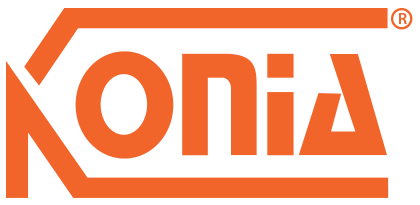When EBARA trialed BricsCAD®, the company projected to reduce its CAD licensing cost significantly over five years, with up to 60% savings.
Now with two hundred and nineteen network licenses used by over eleven hundred personnel company-wide, EBARA has successfully migrated to BricsCAD’s highly compatible and interoperable DWG-CAD, with more flexible licensing management.

EBARA Corporation is a global precision-engineering company which manufactures machinery and equipment for industry and civil infrastructure. The company’s five main businesses are Building Services and Industrial, Energy, Infrastructure, Environmental Solutions, and Precision and Machinery.
The Challenge
Faced with continuously increasing costs for its 2D CAD licenses, the EBARA Corporation put a sharper focus on sharing licenses across its global operations to improve investment value.
EBARA set the goal to manage their CAD license network more efficiently and to reduce absolute costs compared to continuing with the legacy-CAD contracts.
In addition, the company also planned how to operate its CAD licenses more effectively for its users, with the company-wide licensing agreements being centralized.
Challenge #1: Reduce total CAD cost in a global business
EBARA focused on how the five separate business companies individually selected, purchased, and managed their CAD licenses.
Mr. Makoto Otsuka, General Manager at PLM System Section, Value Chain System Department, Information & Communication Management Division, EBARA Corporation, explained:
“The distributors supplying (our) CAD solution were also different. … From an internal control and cost-efficiency perspective, we had been thinking for some time that it was desirable to manage these license agreements as a company centrally.”
Challenge #2: Review CAD usage and add licensing flexibility across network
EBARA began the transition by reviewing the licensing structure for the predominant 2D CAD products used widely in the five main divisions.
At the time, EBARA’s CAD licensing costs from other vendors had recently increased. And the introduction of subscription-only licenses for certain users also had a negative impact.
Getting a suitable CAD licensing structure and flexibility was key to reducing their investment costs over the long term.
“We identified the existing 2D CAD contracts and made a trial calculation based on the new licensing system … Our distributor suggested BricsCAD as an easy-to-use migration partner in terms of cost and license management, as well as compatibility with our existing 2D CAD systems,” outlined Mr. Otsuka.
The Solution
Winning criteria for a new CAD solution: High-performing DWG 2D/3D, workflow compatibility and license sharing
After comparing competing CAD solutions, EBARA chose to migrate to BricsCAD. A key factor in EBARA’s decision to adopt BricsCAD was the 60% reduction in investment costs over five years, calculated from the trial results.
Mr. Makoto Otsuka also highlighted BricsCAD’s capabilities to deliver higher value to the workflows running at the engineering company’s divisions:
“BricsCAD has a proven track record, not only in manufacturing but also in construction and civil engineering. We are in the manufacturing industry, but our plant and other businesses are similar to the construction industry.”
Involve all users to migrate successfully to a new CAD solution
In the trials, key personnel led the selection of professionals required and encouraged as many users as possible to run BricsCAD.
Mr. Otsuka said the company was conscious of the need to win over on-site users. So his team used a product development methodology to handle, respond to, and correct any issues or problems as they came up.
A step-by-step approach to CAD license flexibility and sharing
EBARA began rolling out the software gradually in 2020, starting with some departments whose existing 2D CAD licenses were about to expire.
The total number of licenses now stands at more than 219. And the migration to BricsCAD has been smooth, following close to the original plan.
EBARA also installed the server managing these licenses on an external cloud service, providing greater accessibility for users to incorporate more flexible working.
Commenting on the EBARA’s successful approach in getting the most value when migrating to BricsCAD, Mr. Otsuka said:
“In the 2022 renewal, we have been able to reduce the number of licenses using this approach and still operate without any problems.
We are, of course, continuing to aggregate and visualize usage, and we believe we may increase the number of licenses in the future, depending on the situation.”
Results
Highly-rated for 2D CAD performance
Mr. Otsuka’s primary evaluation started by assessing the capability of BricsCAD for its main engineering businesses.
“First of all, I can say that BricsCAD’s software is an indisputable replacement for our existing 2D CAD software. We have not experienced any major problems with usability since its introduction.
The software itself is lightweight, and the storage footprint and start-up time are highly satisfactory. Users have also reported further performance improvements.”
Simple network licensing and migration best practice
BricsCAD is being installed as a network license, eliminating the complexity of managing the stand-alone licenses for some of the existing CAD systems.
In addition, the company’s easy implementation of BricsCAD has been recognized within the EBARA’s ICT Division as a best practice, enabling the company to achieve governance and cost-management improvements horizontally across the business.
Flexible 3D CAD capabilities
Most 2D CAD users at the five divisions migrated to BricsCAD, although some users continue to use other 2D legacy-CAD for reasons such as existing design-asset data.
For 3D CAD, the requirements for users differ significantly from business to business, making it difficult to unify these licenses currently. However, Mr. Otsuka believes that BricsCAD could handle some of these requirements.
“There is considerable demand for 3D utilization, so we may be able to use BricsCAD as a supplementary 3D CAD system … We will continue to look for ways to reduce costs, expand usage and improve user satisfaction.”
Source: BricsCAD


 Tiếng Việt
Tiếng Việt